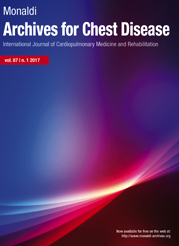Diagnostic utility of flexible bronchoscopy in smear-negative and atypical lung infections: identifying tuberculosis, fungal, and non-tuberculous mycobacteria infections and malignancy
All claims expressed in this article are solely those of the authors and do not necessarily represent those of their affiliated organizations, or those of the publisher, the editors and the reviewers. Any product that may be evaluated in this article or claim that may be made by its manufacturer is not guaranteed or endorsed by the publisher.
Authors
Fiber-optic bronchoscopy (FOB) plays a crucial role in the diagnosis and management of various pulmonary diseases by offering direct visualization of the airways and enabling targeted sampling for microbiological and histopathological evaluation. This study aimed to assess the clinical, radiological, microbiological, and histopathological profiles of patients undergoing FOB. A retrospective analysis of 103 participants who underwent the procedure over one year was conducted. After obtaining informed consent, demographic and clinical information was recorded, and relevant radiological findings were noted. The procedure was performed under local anesthesia. In all cases with inconclusive sputum evaluation, bronchoalveolar lavage (BAL) was conducted, with additional brushing and biopsy performed in selected participants. The collected samples were analyzed to determine the underlying etiology. Among the 103 individuals studied, 52.4% were female, with a mean age of 54.82 years, and the majority (82.5%) were over 40 years old. Cough was the most common symptom (73.78%), followed by breathlessness. The frequent comorbidities included diabetes (27.18%) and hypertension (18.4%). Radiological patterns commonly included consolidation (59%) and cavitary lesions (30.1%). On bronchoscopy, secretions (67%) and inflamed mucosa (26%) were the most frequent findings. BAL cultures were positive in 48% of cases, with Klebsiella being the predominant organism. Tuberculosis was confirmed in 32% of the cases. Histopathology confirmed malignancy in 5.8%, mainly adenocarcinoma. In 24.2% of participants, the procedure was inconclusive. Overall, FOB was found to be a safe and valuable tool in diagnosing a spectrum of pulmonary conditions, especially in smear-negative tuberculosis, fungal and atypical infections, and malignancies, aiding targeted therapy and better clinical outcomes.
Ethics Approval
The study was approved by the Institutional Ethics Committee ( FMIEC/CCM/712/2024 ). The committee assessed the planned project as ethically unobjectionable.How to Cite

This work is licensed under a Creative Commons Attribution-NonCommercial 4.0 International License.






